One man’s bust is another man’s boon. In this particular case the bust could be perceived as BMW’s withdrawal from Formula 1 auto racing, while the resulting boon would undoubtedly belong to BMW Motorrad, the Munich-based company’s motorcycle division.
BMW Motorrad is the beneficiary of the super high-tech F-1 racing team’s former engineering facility, which will become the new home for all things two-wheeled at BMW. How apropos that the first motorcycle to touch tires to the floor of the ultra trick facility would be the all-new 6-cylinder powered K1600GT and K1600GTL; the company’s sport- and luxury-touring offerings for 2011.
Last week, we were one of the lucky few “outsiders” to have ever been allowed inside the secret plant for a personal glimpse of the highly anticipated 6-cylinder-powered machines that broke cover in autumn of 2009 as the Concept 6.
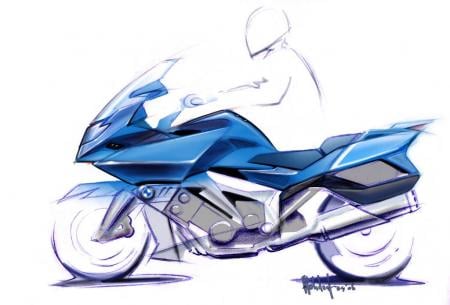 We weren’t allowed to take photos of the K1600 GT and GTL, so you’ll have to make do with these sketches for now. |
It was a logical course for BMW, given its seven-plus decades refining the inline 6-cylinder configuration for its automobiles and its track record as innovators, always moving to the beat of their own drum. BMW, a company that prides itself on uniqueness, is certainly aiming to create another iconic engineering stamp in the vein of its stalwart Boxer powerplant.
Perhaps BMW Motorrad CEO, Hendrik von Kuenheim, put it best by saying, “We have surprised everyone again.”
Aside from the fact that we’re one of the few outside the BMW design and engineering family to have seen the new 6-cylinder bike, perhaps more pertinent, we’re one of the scarce few that has heard it.
So, without further adieu; the six cylinders work like a beautifully syncopated metallurgical orchestra, coalescing into an intoxicatingly sublime growl. It is the internal combustion engine in all its glory; a clockwork orange of advanced technology and polished internals that culminates in a raw, animalistic and visceral exhaust note. The engine sound is so alluringly aggressive, it’s hard to believe it was emanating from, ostensibly, a touring machine.
Once again, von Kuenheim sums it up very succinctly, saying, “We’ve gone very sporty, but we haven’t forgotten where BMW came from.”
The 6-cylinder concept was born out of a winning combination of engineering prowess and panache for innovation, while being grounded in good sense. Mechanically, six cylinders promise unparalleled smoothness in engine operation while providing optimum power and response. Psychologically, six cylinders represent something unique in a motorcycle. That said, the GT and GTL are more than just 6-cylinder motorcycles, they are next-generation touring machines with the soul of a sportbike.
First up, and most substantial, is the 6-cylinder 1649cc powerplant. The new engine is narrow (22.0 inches) and compact, rivaling most in-line 4-cylinder engines in terms of width. The narrow profile was achieved by moving electrical units and their drive mechanisms into the space above the gearbox. Contributing to the compactness of the motor is the undersquare bore and stroke ratio, 67.5mm and 72mm, respectively. Further slimming was achieved by reducing the distance between cylinder sleeves to just 5mm. BMW says the motor weighs 226.2 pounds.
The new engine platform runs a traditional 6-cylinder offset of 120 degrees for an even firing order for smoothness. The engine’s internals have been carefully balanced to eliminate the need for a heavy balance shaft for substantial weight savings. Its single-piece crankshaft is forged from heat-treated steel with counterweights and inertia-optimized discs. The four-valve-per-cylinder head utilizes bucket tappets for maximum compactness and reliability, operated by chain driven overhead cams with hydraulic tensioner, all buttoned up with a magnesium valve cover.
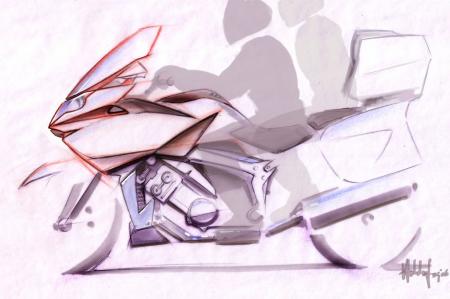 The GTL offers more relaxed ergos than its sport-touring brother. |
Bottom line: 160 horsepower at approximately 7500 rpm with a maximum torque rating of 129 ft-lbs reached at 5000 rpm. Impressively, BMW claims 70% of maximum torque is available at just 1500 rpm.
The K1600’s 6-speed transmission is coupled to the engine via a 10-disc wet clutch said to offer a light pull. The clutch aids sloppy downshifts with its “slipper” back-torque-limiting function. The transmission is comprised of three gear shafts stacked one on top of the other to reduce overall width at the footpeg area. Shaft drive in the form of BMW’s tried and true Paralever swingarm gets the 6-cylinder mill’s power to the rear wheel.
The 52mm throttle valve is operated via E-Gas (ride-by-wire). The exhaust system's six header pipes are divided into a three-cylinder group to each side of the bike (a six-into-two arrangement), with three distinct pipe tips protruding from the end of each of the two mufflers. The Ride-by-wire system has three modes for engine performance; “Rain,” “Road,” and “Dynamic,” to allow tailoring of engine performance to suit riding conditions and personal preference. Optional Dynamic Traction Control (DTC) and Electronic Suspension Adjustment (ESA) add safety and comfort.
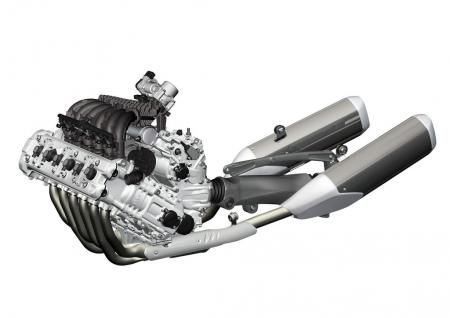 According to BMW, this powerplant delivers 70% of its maximum torque at just 1500 rpm. |
BMW says the K1600’s chassis incorporates technology borrowed from the track-ready S1000RR, with a sophisticated manufacturing process that allows various wall thicknesses of the hollow bridge-type main frame to suit specific stress points. The rear subframe is made out of aluminum, and the front section (which holds the fairing and dash assembly) is made out of magnesium in the interest of saving weight. The box frame contains a dramatic narrowing from engine carriage to the footrests, providing the narrowest possible width at the crucial mid-point of the bike where the rider’s legs are, ensuring the most secure reach.
Following the design trait of the K1300 machines, the cylinder axis of the GT and GTL is tilted forward 55 degrees for a lower center of gravity. Weight distribution on the GT is 52% on the front and 48% at the rear, about what is considered optimum for a roadracing sportbike.
BMW’s established EVO brake system with Integral ABS is fitted standard for optimum controllable braking. An additional pressure sensor enables shorter braking distances at low-level control force.
Whereas the GT is intended as a highly “proactive” sport-touring machine with an aggressive riding position, the GTL possesses slightly more relaxed rider and passenger ergonomics achieved with a two-level seat, footrests that are set lower and further forward, and a handlebar that is swept back for more of an upright riding stance. Adding to the luxurious element the GTL has additional storage capacity and an audio system standard.
A first for motorcycles, the K1600 GT and GTL feature the “Adaptive Headlight” system as an option.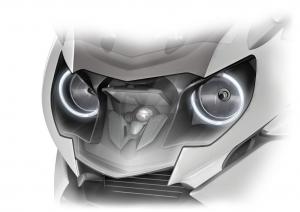
The 2011 GT and GTL represent a world premiere option in motorcycles: the “Adaptive Headlight” system. In addition to the standard Xenon headlamp (with level sensors to provide headlight beam leveling regardless of riding and load conditions) the optional “Adaptive Headlight” is comprised of a movable xenon projection module with reflector mirror.
A stepper motor transforms the static reflector mirror into a movable surface, which takes data from a gyro sensor to compensate for roll and lean angle. The result is a constant level horizon of the headlight beam–despite lean angle–for significantly improved illumination. You can see a video demontration of the Adaptive Headlight in a news story we wrote earlier this week.
Both the GT and GTL are fitted with Xenon headlight, heated grips and seat, cruise control and on-board computer standard. A digital, full-color instrument panel with speedometer and tachometer displayed on a highly visible and extremely bright 5.7-inch monitor (GPS integrated) is built into the dash.
Both bikes use the Multi-Controller that was introduced on the RT in 2009 as part of the integrated operating concept. Positioned on the inner left-hand side of the handlebar grip, the system puts the cluster of operating buttons within easy reach while riding for convenience and safety, allowing full operation of options without having to take the hand from the handlebar.
 The integrated operating concept looks more like something you’d find in a luxury car than on a motorcycle. |
BMW is preserving the excitement of this important introduction, choosing to not release any photos of the 2011 GT and GTL until the Intermot show in November. In other words, no photographs of the machine have been made available to the press. We have to make due for the moment with concept and design sketches seen here. Having seen the bikes up close and personal, we can attest to sleek lines and a design flow that effectively meshes sportbike aerodynamics with somewhat traditional touring lines, held together by signature, distinctive BMW appearance with accompanying flare and sheen.
BMW Motorrad Chief Designer David Robb thinks more in terms of jazz music when describing the design concept of the bodywork of the GT and GTL, inferring a kind of free-flowing form that feels like total spontaneity but that is actually quite structured.
BMW has once again proven its status as an engineering innovator in full force these days. The 6-cylinder K1600 GT and GTL promise a new level of sport- and luxury-touring performance combined with a new spirit of ride-ability.
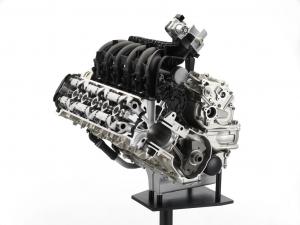

No comments:
Post a Comment